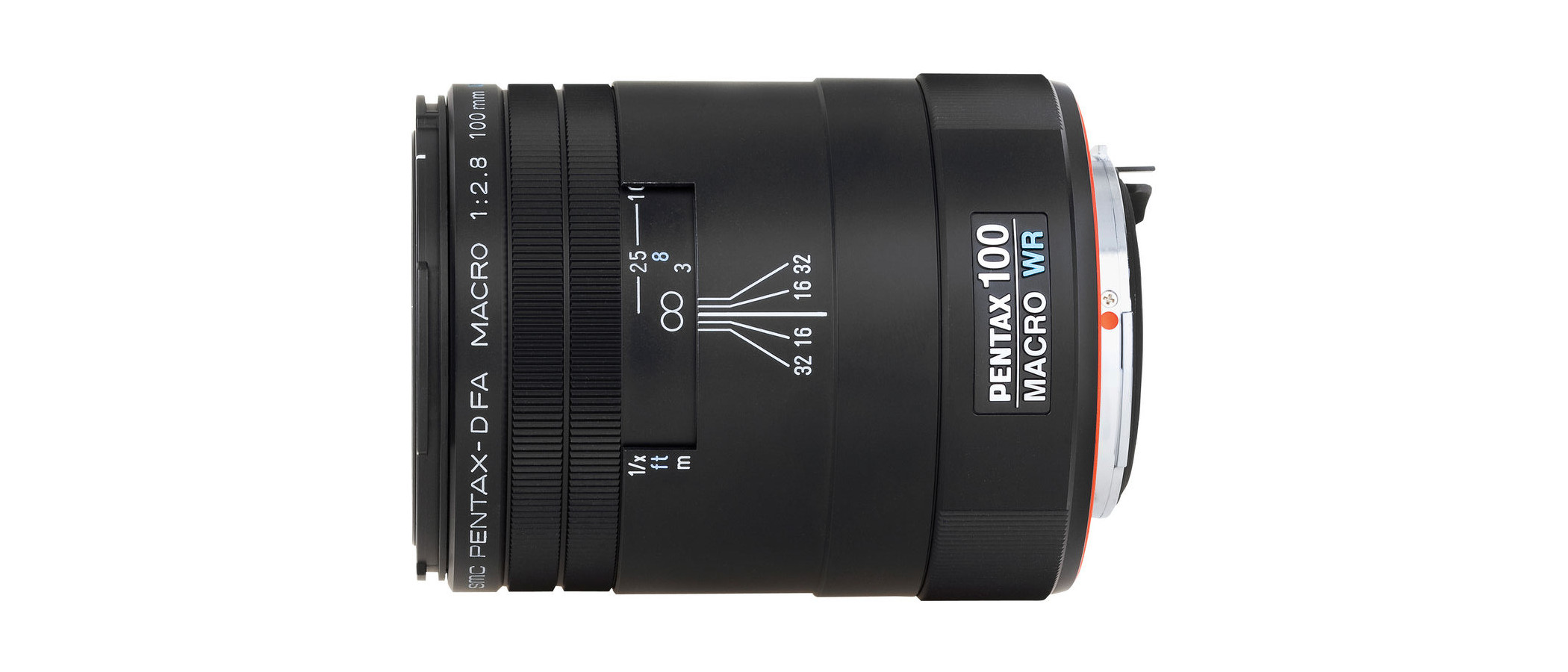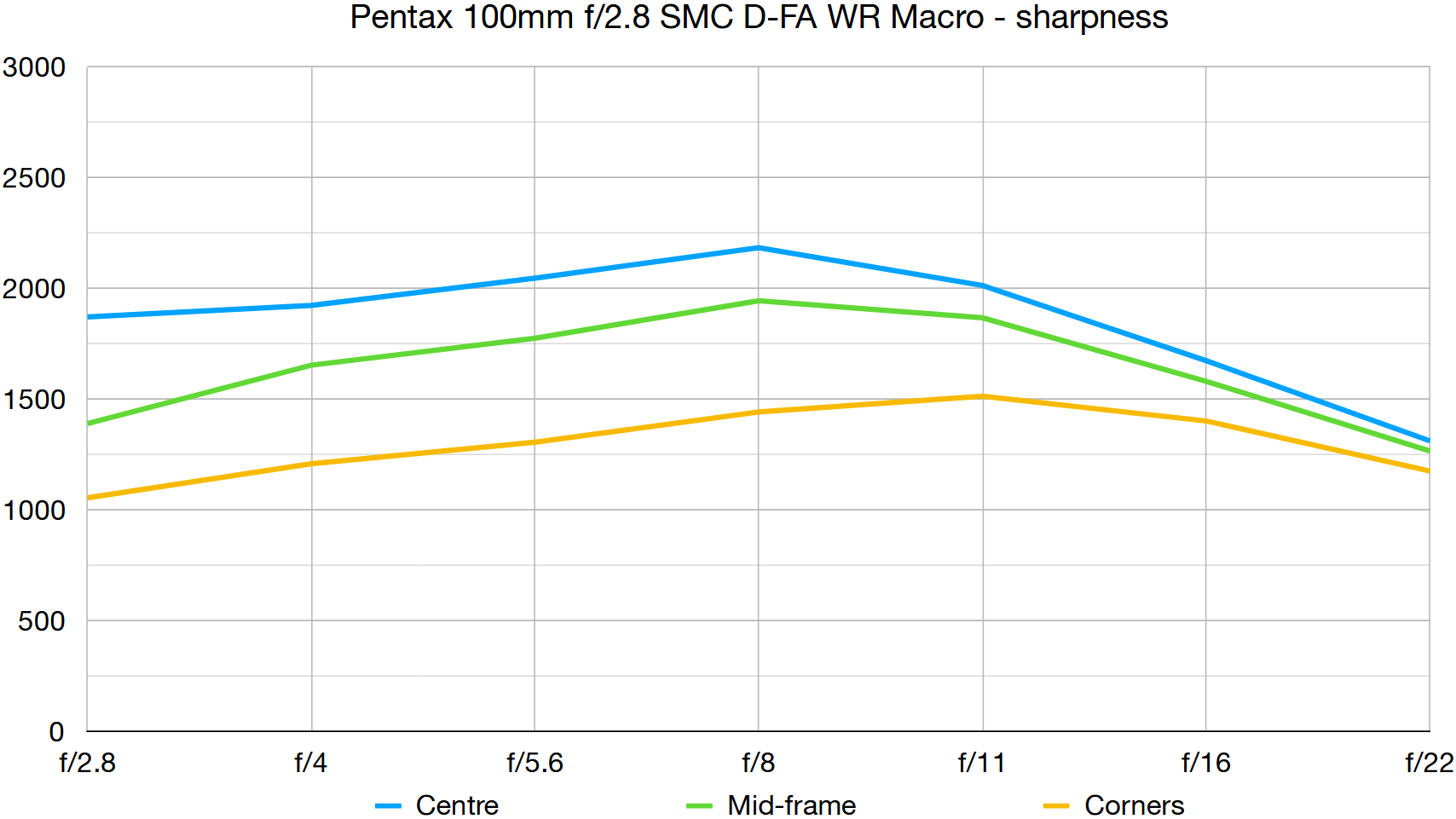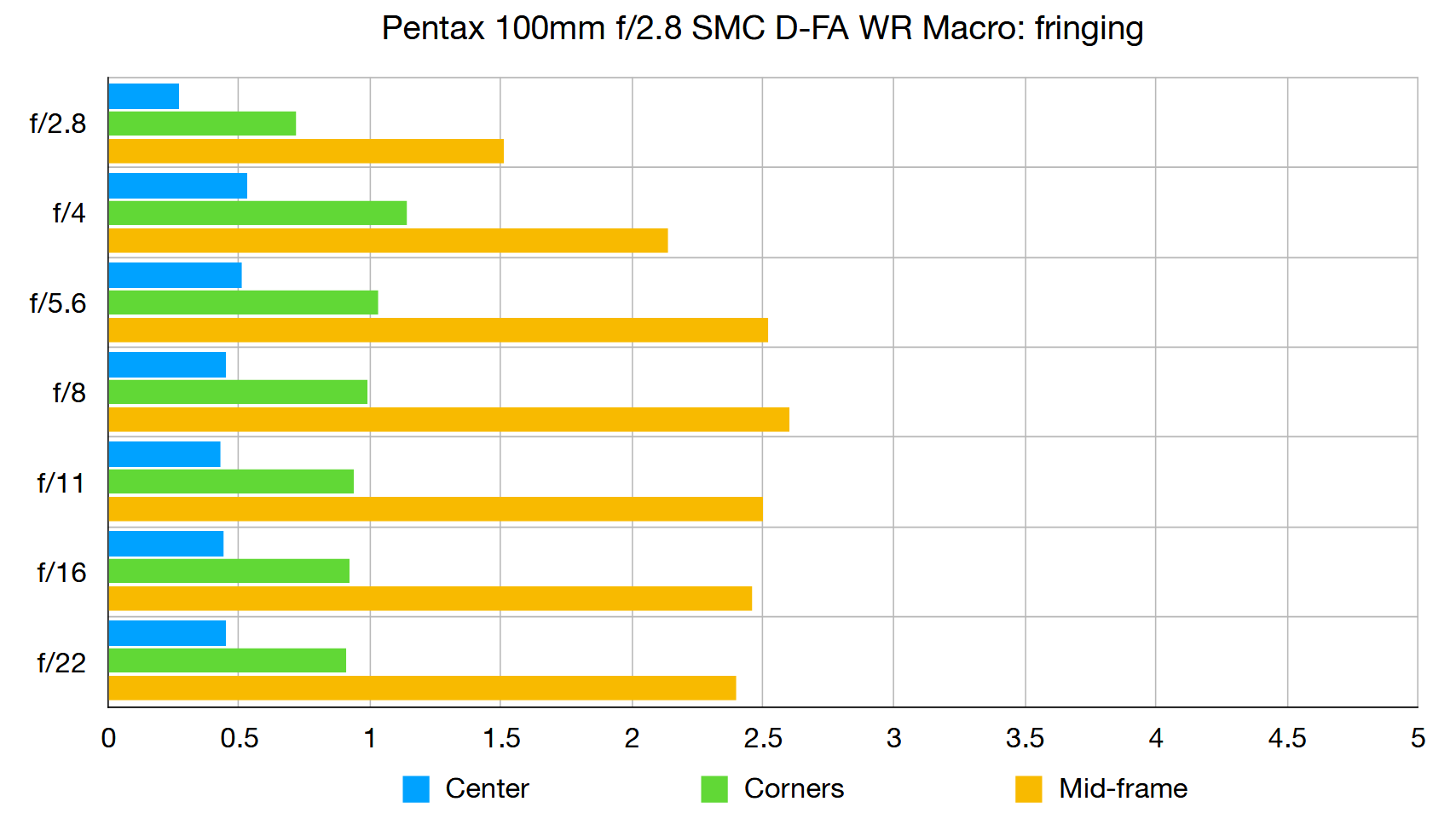Digital Camera World Verdict
Unlike most modern macro lenses, this Pentax is physically short at 64mm in length, but the inner barrel extends at shorter focus distances. And unlike many Pentax K-mount lenses, it’s full-frame compatible so works equally well on K-1 series bodies as well as with Pentax APS-C format DSLRs. Handling, construction and image quality are good but autofocus is noisy, relying on a screw-drive from the host camera body and there’s no range limiter switch.
Pros
- +
Compact stowage size
- +
Full-frame compatible
- +
Extensive weather-seals
Cons
- -
Extends at shorter focus distances
- -
No internal autofocus motor
- -
No autofocus range limiter
Why you can trust Digital Camera World
The Pentax 100mm f/2.8 SMC D-FA WR Macro bucks the trend of most current macro lenses that deliver full 1.0x or 1:1 magnification, as it lacks an internal focus system. Instead, it extends in physical length as you decrease the focus distance towards its minimum setting. On the plus side, it’s only two-thirds of the length of most 100mm macro lenses at its infinity focus setting.
Specifications
Mount: Pentax K (full-frame)
Full-frame: Yes
Autofocus: Yes (using host camera)
Stabilization: No
Lens construction: 9 elements in 8 groups
Angle of view: 24.5 degrees
Diaphragm blades: 8
Minimum aperture: f/32
Minimum focusing distance: 0.3m
Maximum magnification ratio: 1.0x
Filter size: 49mm
Dimensions: 81x64mm
Weight: 340g
Key features
Typical of high-end Pentax lenses, this one is well built. It features an aluminum outer barrel, an extensive set of six weather seals, including a rubber ring around the metal mounting plate, plus a 'super protection' coating on its front element to repel moisture and grease.
There’s a focus distance and magnification factor scale, complete with depth of field markings for apertures of f/16 and f/32. The lens also features Pentax’s ‘Quick Shift’ mechanism for easy switching between autofocus and manual focus, the latter generally being preferred in macro photography.
However, the finery doesn’t stretch to an internal autofocus motor. Instead the lens relies on a helical drive from the in-body motor of the host camera. This is typically much noisier than the ultrasonic or stepping motor autofocus systems featured in most modern lenses. To make matters worse, there’s no autofocus limiter switch for locking out the short or long end of the range.
Performance
Although relatively small, the manual focus ring operates with smooth precision, enabling very fine adjustments in close-up shooting. Autofocus isn’t overly quick and, without a range limiter switch, is prone to hunting throughout its entire range when trying to lock onto tricky macro subjects. Image quality is pretty good overall, but corner-sharpness is a bit lacking when using Pentax’s full-frame rather than APS-C format bodies, and lateral chromatic aberration can be noticeable towards the edges and corners of the frame.
Lab results
We run a range of lab tests under controlled conditions, using the Imatest Master testing suite. Photos of test charts are taken across the range of apertures and zooms (where available), then analyzed for sharpness, distortion and chromatic aberrations.
We use Imatest SFR (spatial frequency response) charts and analysis software to plot lens resolution at the center of the image frame, corners and mid-point distances, across the range of aperture settings and, with zoom lenses, at four different focal lengths. The tests also measure distortion and color fringing (chromatic aberration).
Sharpness:
Sharpness across the whole image frame is impressive throughout nearly the entire aperture range, only dropping off a little towards the edges and corners at f/2.8 and between f/22-32. Even so, sharpness holds up well at narrow apertures, often preferred for macro shooting.
Fringing:
Lateral chromatic aberration towards the edges and corners of the frame is fairly minimal when using an APS-C body but can be clearly visible with a full-frame camera.
Distortion: -0.42
The best camera deals, reviews, product advice, and unmissable photography news, direct to your inbox!
There’s a hint of barrel distortion but it’s of a uniform nature and easy to correct if necessary.
Verdict
Unlike most modern macro lenses, this Pentax is physically short at 64mm in length, but the inner barrel extends at shorter focus distances. And unlike many Pentax K-mount lenses, it’s full-frame compatible so works equally well on K-1 series bodies as well as with Pentax APS-C format DSLRs. Handling, construction and image quality are good but autofocus is noisy, relying on a screw-drive from the host camera body and there’s no range limiter switch.
Read more:
• Best camera lenses to get
• Best Canon lenses
• Best Nikon lenses
• Best Sony lenses
Matthew Richards is a photographer and journalist who has spent years using and reviewing all manner of photo gear. He is Digital Camera World's principal lens reviewer – and has tested more primes and zooms than most people have had hot dinners!
His expertise with equipment doesn’t end there, though. He is also an encyclopedia when it comes to all manner of cameras, camera holsters and bags, flashguns, tripods and heads, printers, papers and inks, and just about anything imaging-related.
In an earlier life he was a broadcast engineer at the BBC, as well as a former editor of PC Guide.




